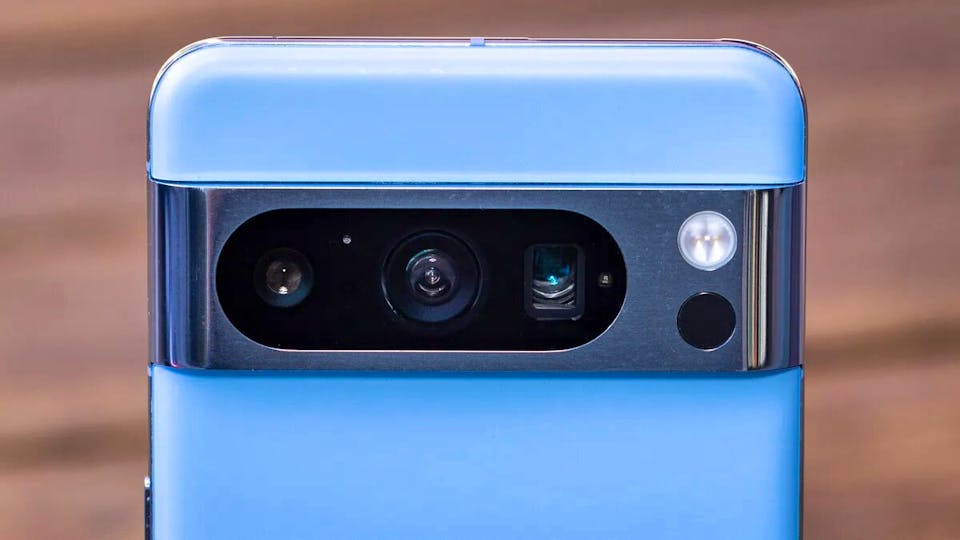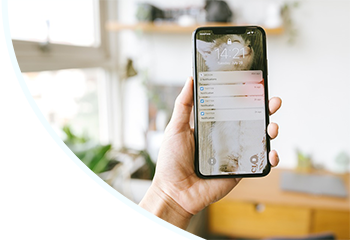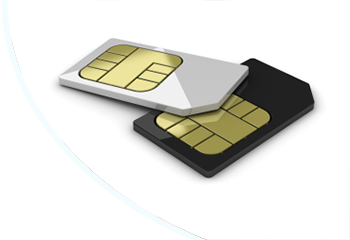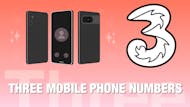With the release of the Google Pixel 8a earlier this month, the full collection of the latest iteration of the Google Pixel range, the Pixel 8, is now complete.
After the Pixel 7 range received rave reviews all around, how does the Pixel 8 matchup, and more importantly, how does the Google Pixel 8 range compare against one another?
Let’s find out as we take a look at the stats and specifications for each and dive into the Pixel 8 range.
What phones make up the Google Pixel 8 range?
For the third year in a row, Google has made up their latest Pixel range with three phones, with the 8 range being comprised of the Pixel 8, 8 Pro and the 8a.
The 8 Pro is the flagship, top-of-the-range model that comes with all the bells and whistles but makes it the most expensive by some margin. Although for the price point, it certainly does perform well against its other top-range competitors.
The 8a is the mid-range, budget-friendlier option that comes with a few less additions than the 8 but still performs very well.
The 8 is the middle ground of the range, bridging the gap between the mid and high-range editions. It comes very well equipped, not the very best like on the Pro but more than the a, and is available at a very attractive price point.
Google Pixel 8 range: Specifications
¬ | Pixel 8 Pro | Pixel 8 | Pixel 8a |
Dimensions (HxWxD, mm) | 162.6 x 76.5 x 8.8 | 150.5 x 70.8 x 8.9 | 152.1 x 72.7 x 8.9 |
Weight | 213g | 187g | 188g |
Display | 6.7-inch 1440p QHD+ LTPO OLED at ~489 ppi, 2992 x 1344 px (20:9), 1-120 Hz refresh rate, HDR10+, 2400 nits peak brightness | 6.2-inch 1080p FHD+ OLED at ~428 ppi, 2400 x 1080 px (20:9), 60-120 Hz refresh rate, HDR10+, 2000 nits peak brightness | 6.1-inch 1080p FHD+ OLED at ~430 ppi, 2400 x 1080 px (20:9), 1-120 Hz refresh rate, HDR, 2000 nits peak brightness |
Front camera | 10.5MP dual PD, f/2.2 aperture, 95° ultrawide FOV | 10.5MP dual PD, f/2.2 aperture, 95° ultrawide FOV | 13MP Ultrawide, f/2.2 aperture, 96.5° ultrawide FOV |
Rear camera | Three camera: 50MP Octa PD wide, f/1.68, 82° FOV 48MP Quad PD ultrawide with auto-focus, f/1.95, 125.5° FOV 48MP Quad PD telephoto, f/2.8, 21.8° FOV, 5x optical zoom, Super Res Zoom up to 30x | Dual camera: 50MP Octa PD wide, f/1.68, 82° FOV, Super Res Zoom up to 8x, 12MP ultrawide with auto-focus, f/2.2, 125.8° FOV | Dual camera: 64MP Quad PD wide, f/1.89, 80° FOV, Super Res Zoom up to 8x 13MP ultrawide, f/2.2, 120° FOV |
Video resolution | Front – 4K recording at 24, 30 & 60 FPS Rear – 4K recording at 24, 30 & 60 FPS, 1080p recording at 24, 30 & 60 FPS | Front – 4K recording at 24, 30 & 60 FPS Rear – 4K recording at 24, 30 & 60 FPS, 1080p recording at 24, 30 & 60 FPS | Front – 4K recording at 30 FPS, 1080p recording at 30 FPS Rear – 4K recording at 30 & 60 FPS, 1080p recording at 30 & 60 FPS |
Chipset | Google Tensor G3 | Google Tensor G3 | Google Tensor G3 |
Memory | 12GB RAM | 8GB RAM | 8GB RAM |
Storage | 128GB, 256GB, 512GB | 128GB, 256GB | 128GB, 256GB |
Battery | 5050mAh | 4575mAh | 4492mAh |
Price | 128GB – £999 256GB – £1059 512GB – £1179 | 128GB – £699 256GB – £759 | 128GB – £499 256GB – £549 |
Google Pixel 8 range: Display Technology
As mentioned earlier, the 8 Pro is the top-of-the-range out of the three, so you’ll find that it has superior elements to the phone compared to the 8 and 8a.
Although interestingly this year, when compared to the 7 Pro, some things seem to have been downgraded, with the first standout being the display resolution in that it has gone from a 1440 x 3120 AMOLED display to a 1344 x 2992 OLED display.
But while that on the surface may seem like a downgrade, what they have done instead is make the picture more vivid by giving the 8 Pro a vastly brighter screen, with peak nits of 2400 - 900 nits higher than the 7 Pro’s peak.
In fact, the overall screen brightness has seen an increase across the 8 range, with both the 8 and 8a boasting a peak of 2000 nits against the 7 and 7a’s 1400 peak.
This, along with the fact that all three phones can now reach 120Hz refresh rate as opposed to only the 7 pro being capable of doing so, (the 7 and 7a were limited to 90Hz max refresh rate) means the Pixel 8 range has a fantastically vivid display with a great depth of colours and smooth movement.
Compared with each other, though, there is no question that the 8 Pro performs the strongest. The 8 and 8a simply can’t match the Pro’s 1440p QHD+ resolution.
The 8 and 8a are very similar in display, with the only real difference being 0.1 inch in size and the fact that the 8 supports HDR10+ while the 8a can’t.
But the 8a makes up for that loss by being capable of matching the 8 Pro with an adaptive refresh rate that ranges from 1-120Hz, which helps preserve battery life. The 8 is limited to 60-120Hz, making it slightly less efficient.
Google Pixel 8 range: Camera Capabilities

Pixel’s are known for having very solid camera setups and features, and that is no different for the 8 range.
The 8a has almost the exact same main camera setup as the 7a, only with a few new features such as Ultra HDR and Best Take included (due to the integrated AI, more on that later).
As for the 8 and 8 Pro, they too have largely kept their main set-up the same as their predecessor, although both have seen a change in the aperture of the main wide camera go from f/1.9 to f/1.7.
From looking at the table in the specifications section, comparing the 8 and 8a looks like the 8a has a slightly better main camera setup than the 8. 64MP wide and 13MP ultra-wide on the 8a compared to the 8’s 50MP wide and 12MP ultra-wide, but it's the other things that matter just as much.
The 8 boasts a better field of view for both wide and ultrawide cameras and also has auto-focus on the ultra-wide.
But with all that said, the 8 Pro absolutely trumps both. The main wide camera may be identical to the 8, but everything after that couldn’t be more different.
The 8 Pro features a three-camera setup as opposed to the 8 and 8a’s two-camera setup, with the Pro boasting a 48MP telephoto camera capable of 5x optical zoom and 30x super-resolution zoom.
There’s not really much to talk about with the selfie camera as they have remained essentially unchanged for each.
For the phone camera enthusiasts, it’s an easy choice to make if you’re looking at going for a Pixel. If you’re not too bothered though about the camera, then the 8 and 8a still perform very well to keep you satisfied if and when you do use the camera.
Video quality
The 8a has seen no change to its video quality on either its main or selfie cameras compared to its predecessor. The 8 Pro also retained the same video quality as the main camera.
As for the 8, it has increased its 4K capabilities on the main camera by offering 24, 30 and 60 FPS while keeping its options for 1080p recordings the same (30, 60, 120 & 240 FPS).
On the selfie camera for the 8 and 8 Pro, both now offer 4K at 24 FPS as well as the standard 30 and 60 FPS.
Camera features
There are several new features introduced to the 8 range that have been achieved through the use of the Pixel 8 range’s integrated Google AI.
Google introduced AI into the range to improve the phones in many ways, in particular on the camera software.
AI is used to enhance images in a more natural way to the software and tools available on previous phones where manual editing was the way forward.
The 8 Pro comes with advanced software tools that will take your pictures and videos to the next level, but some tools can also be found on the 8 and 8a. Here are some of the software tools available with the 8 range:
8 pro only
- Night Sight Video
- Video Boost
- Pro Controls
Available across the 8 range
- Best Take
- Magic Editor
- Audio Magic Eraser
Google Pixel 8 range: Performance
The 8 range has seen an upgrade in performance in the form of the new Google Tensor G3 chipset.
While the G3 doesn’t quite match up to the Qualcomm Snapdragon (used in the Samsung Galaxy range) in traditional benchmarks, it isn’t exactly designed to be better or match Qualcomm’s offering, but instead providing the needed capabilities for AI tests and natural language processing.
The 8 and 8a come with 8GB of RAM while the 8 Pro packs 12GB, giving it better overal performance, although 8GB isn’t bad at all still.
Google Pixel 8 range: Battery Life
The Pixel 8 range has seen improved battery performance on all three phones, with larger batteries for each compared to their predecessors.
The 8 Pro makes the smallest jump, from 5000mAh to 5050mAh, but with other variables such as the adaptive refresh rate, the overal battery performance far betters the 7 Pro.
The 8 saw the biggest jump, going from a 4355mAh battery in the 7 to a 4575mAh battery. The 8a isn’t too far off the 8 either, coming in with a 4492mAh battery.
In terms of charging, the Pixel 8 range isn’t setting the world alight but does perform decently. Depending on how you use your phone, it should be capable of lasting a full day without the need to be charged.
As shown from the graph above, the 8 actually performs best in charging speed, just slightly ahead of the 8 Pro. The 8a on the other hand slows down considerably the longer it charges.
Data taken from androidauthority.com. Measured using a wired charging cable, 18W for 8a, 27W for 8 and 30W for 8 Pro.
Google Pixel 8 range: Price Comparison
As said from the start, the 8 Pro comes out to be the most expensive while the 8a is the most budget-friendly.
Each phone comes with at least two different prices depending on storage, with more storage costing slightly more. Here is how much each costs if buying upfront from Google:
Pixel 8 Pro
- 128GB – £999
- 256GB – £1059
- 512GB – £1179
Pixel 8
- 128GB – £699
- 256GB – £759
Pixel 8a
- 128GB – £449
- 256GB – £549









